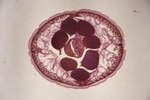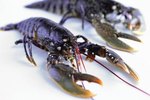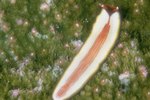
Despite their tiny size, ants rely on both internal and external organs to carry out their necessary biological functions. Among other things, ants must digest food, nourish and ventilate their tissues and collect and process data from the outside world. In addition to a few organs analogous to those of humans, ants possess some organs that are unlike anything inside human bodies.
Tiny Tickers
While ants use a fluid somewhat analogous to blood for nourishing their tissues, it is not contained within vessels as it is in vertebrates. Rather, the “blood” – technically termed hemolymph – flows freely throughout their bodies. While they lack a proper heart, they do have a pumping organ called a dorsal aorta that pumps blood towards the head, achieving a small current. Unlike blood, hemolymph does not carry oxygen; so, ants – and all other insects – lack lungs entirely. Instead, ants breathe through a set of tubes called tracheae. Air enters and exits the tracheal system through a series of holes called spiracles.
Structure and Stingers
Ants move by using muscles, just as humans do. However, like all other insects, ants lack internal skeletons; instead, they use strong, chitinous exoskeletons for support and protection. Many ants are capable of injecting or spraying formic acid, and most do so by means of a stinger and venom gland. As with the rest of the hymenopterans – a group primarily comprised of ants, bees and wasps – these stingers are modified egg-laying formations called ovipositors, only sterile females possess.
Digestive Organs
Ants have a digestive system that is broadly similar to that of vertebrates – they take food in through a mouth, pass it to a stomach and ultimately excrete the waste from a rectum. Like many other animals, ants have crops used to temporarily hold food. In the case of ants, the crop stores food for transport back to the nest.
Sensory and Control Organs
While ants have very different eyes from those of humans, they perform the same basic function, and collect visual information about their surroundings. However, rather than their eyes, ants rely heavily on their antennae, which collect tactile and chemical from the environment. This and other information travels as electrical impulses along nerve cells to reach the brain, which processes the data and sends out command signals to the body.
References
Photo Credits
-
Photos.com/Photos.com/Getty Images




